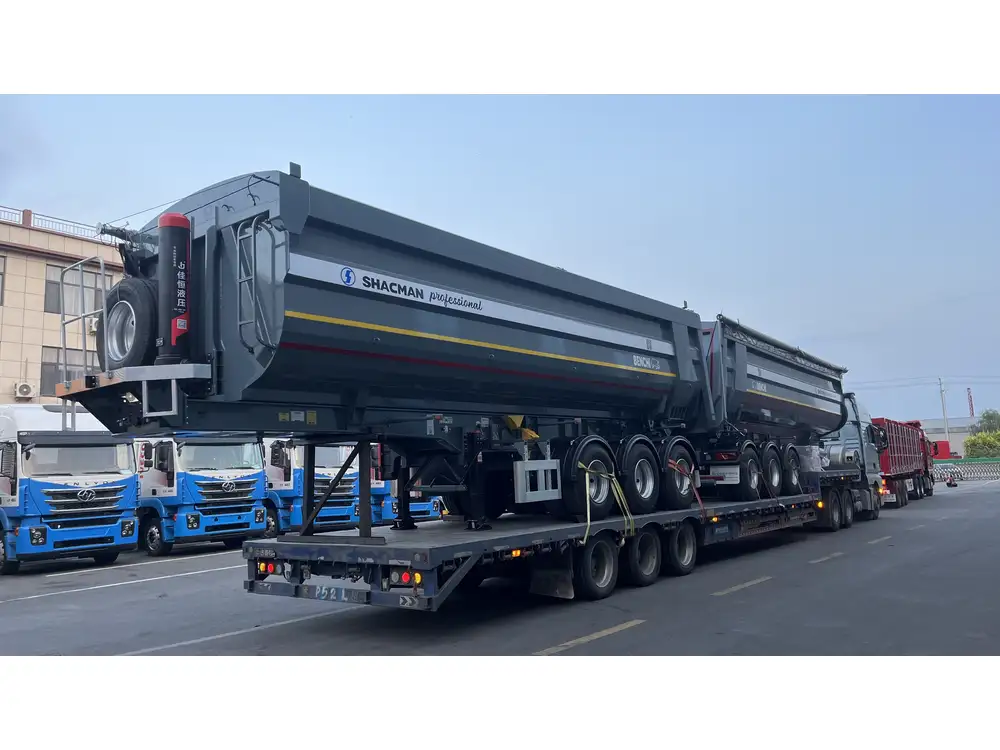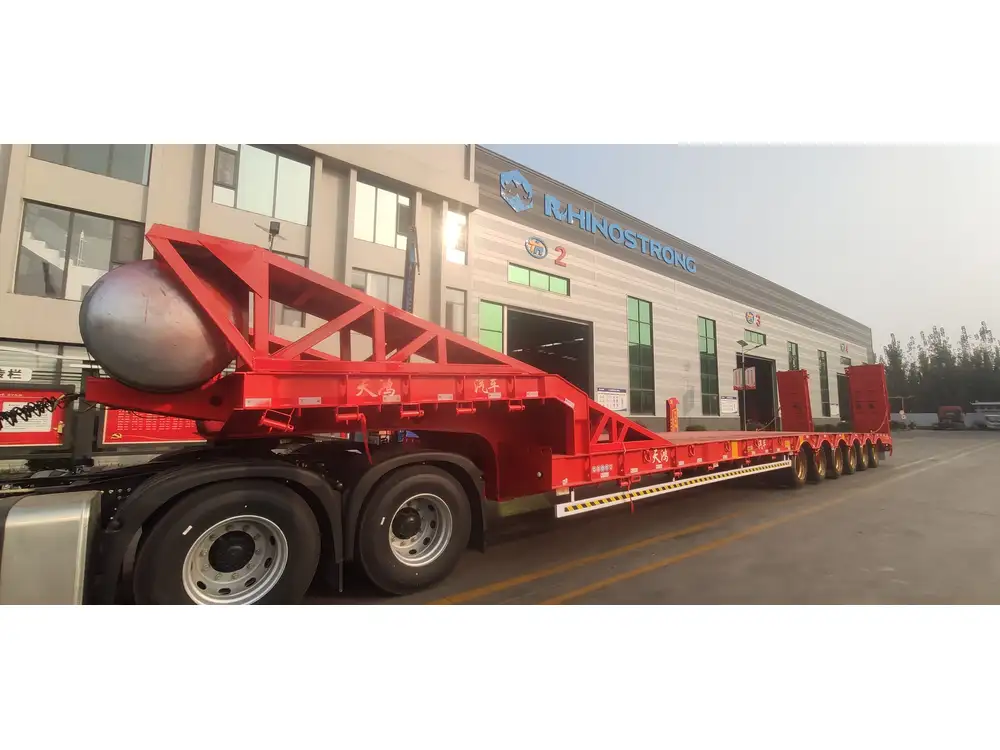When exploring the world of logistics and transportation, understanding the specifications of semi-trailers is crucial. One of the most pressing inquiries among fleet operators, logistics managers, and freight carriers is: how wide is the inside of a semi-trailer? This question, while seemingly straightforward, encompasses several intricacies that can significantly impact cargo management, loading efficiency, and overall operational strategy.
The Standard Width of Semi-Trailers
To comprehend the internal dimensions of semi-trailers, we must first establish the standard width specifications. Semi-trailers comply with varying federal and state regulations, which dictate their maximum allowable dimensions for road travel.
External Width: The federal maximum width for all types of truck trailers is 8.5 feet (102 inches). This includes the external structure, side rails, and any optional equipment.
Internal Width: However, the internal width of a semi-trailer is slightly less due to the material thickness of the trailer walls and structural components. Typically, the internal width ranges around 8.0 to 8.25 feet (96 to 99 inches). This discrepancy is essential for logistics planning, as it offers a more accurate picture of usable cargo space.
Configurations: The Types of Semi-Trailers
Understanding the basic types of semi-trailers will help illuminate why internal dimensions vary based on design and application. Here are some common configurations:
| Type of Semi-Trailer | Standard Internal Width | Common Uses |
|---|---|---|
| Dry Van | 8.0 – 8.25 feet | General freight, dry goods |
| Flatbed | 8.0 feet | Heavy machinery, construction materials |
| Reefer (Refrigerated) | 8.0 – 8.25 feet | Perishable goods, temperature-sensitive freight |
| Tank Trailers | Varies greatly | Liquid bulk transport |

Why Internal Width Matters in Freight and Shipping
Understanding the internal dimensions of semi-trailers is not merely about measurements; it directly affects several operational aspects. Here are key considerations:
Cargo Capacity: Knowing the internal width helps in determining how many pallets can fit side by side, which impacts load optimization. Standard pallets typically measure 48 inches wide. Therefore, with an internal width of 8.0 feet, two pallets can be arranged side by side, while a slightly wider internal width allows for additional configurations.
Loading Efficiency: Efficient loading and unloading processes are contingent upon accurate dimensional knowledge. If a fleet manager underestimates the internal width, it can lead to complications during loading operations, causing delays and increased labor costs.
Legal Compliance and Safety: Understanding the width ensures adherence to legal transportation standards, minimizing the risk of overloading or unsafe cargo distribution.
Internal Height and Length Considerations
While the focus is often on width, understanding the full dimensional scope includes height and length, which also play vital roles in cargo management.
Internal Height: Standard internal heights for typical semi-trailers generally range from 7.5 to 8.5 feet (90 to 102 inches). This variation influences the volume of freight that can be accommodated, especially when considering taller items or innovative loading configurations.
Internal Length: The length of a semi-trailer can vary, typically ranging from 28 to 53 feet. The most common length in freight operations is 53 feet, which offers a highly versatile space for transporting a wide array of goods.
Evaluating Specialized Semi-Trailer Designs
Beyond the standard configurations, specialized semi-trailer designs exist for specific transport requirements. The width of these trailers may also differ from conventional designs, which is essential to consider for specialized loads.

1. Lowboy Trailers
Lowboys are designed to transport heavy equipment. Their internal width remains standard, but the height can be as low as 18 inches, reducing the overall height of the load.
2. Step Deck Trailers
Step deck trailers have dual levels, with the upper deck maintaining standard width, allowing for taller cargo on the lower level while complying with height regulations.
3. Double-Drop Trailers
These trailers feature a drop in the middle section, often reaching a height of around 24 inches, increasing the potential for carrying tall machinery while also maintaining standard width.

Understanding Pallet Configuration and Internal Dimensions
Proper cargo configuration relies heavily on understanding how many pallets can fit within a given semi-trailer. The sweet spot lies in the internal width and the loading mechanisms.
Pallet Arrangement Examples
| Configuration | Standard Pallet Size | Pallets Across (Internal Width) | Notes |
|---|---|---|---|
| Single Stack | 48″ x 40″ (1.33m x 1.02m) | 2 (96 inches across) | Easy access |
| Double Stack | 48″ x 40″ | 2 (96 inches across) | Requires height |
| Side-by-side Load | 48″ x 40″ | 2 (with space for maneuvering) | High loading efficiency |
The Role of Technology in Understanding Dimensions
The increasing integration of technology in the logistics sector addresses dimensional challenges. Tools such as:
Trailer Management Systems: These systems monitor the utilization and dimensions of trailers in real time, ensuring optimal loading configurations.
3D Scanning and Modeling: This technology assists in visualizing the internal layout of semis, allowing planners to explore potential dimensions and configurations without the need for physical measurement.

Key Takeaways on Semi-Trailer Dimensions
Understanding the internal width—and dimensions in general—of semi-trailers is pivotal for enhancing freight operations. By comprehending these figures, stakeholders can greatly improve their loading strategies, reduce operational delays, and ensure compliance with safety regulations. Here’s a quick summary of the key takeaways:
- Standard internal width: Approximately 8.0 to 8.25 feet.
- Importance of dimensions: Vital for load optimization, efficiency, and safety compliance.
- Consider specialized designs: Unique trailer types can have modified internal dimensions.
- Use technology: Implement systems to optimize and visualize internal dimensions for better decision-making.
Conclusion: Moving Forward in Logistics with Dimensional Awareness
The logistics landscape continuously evolves, driven by technological advancements and shifting market demands. For manufacturers, suppliers, and logistics managers navigating this terrain, a firm grasp of trailer dimensions—specifically the internal width—is indispensable. As businesses increasingly seek efficiency and effectiveness, understanding the variables that impact cargo handling becomes paramount.
By embracing a strategic approach to semi-trailer dimensions—coupled with a commitment to innovative technological solutions—companies can enhance their operational capabilities and cultivate a competitive edge in the dynamic world of freight and logistics. Make informed decisions and elevate your logistics operations to new heights with comprehensive knowledge of semi-trailer dimensions!



